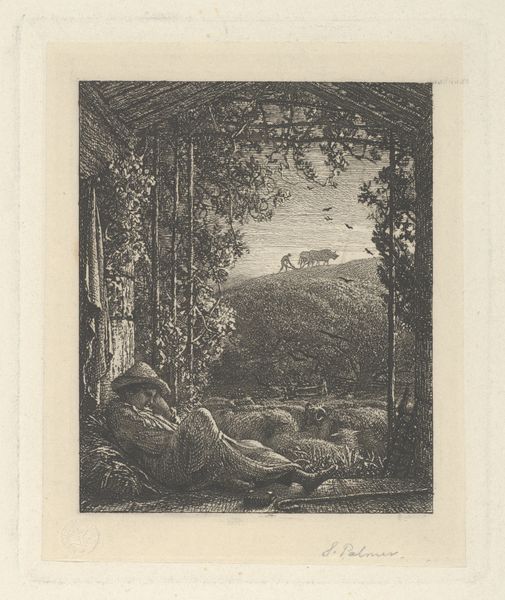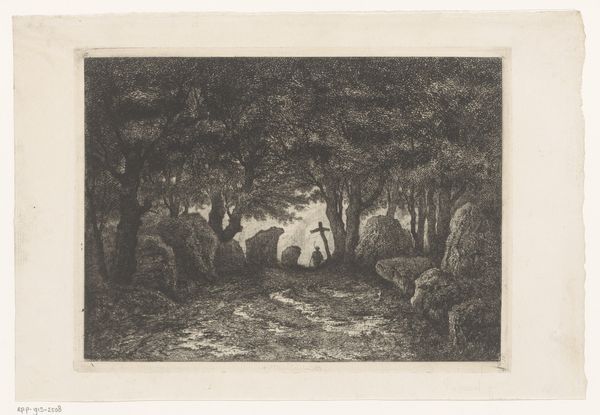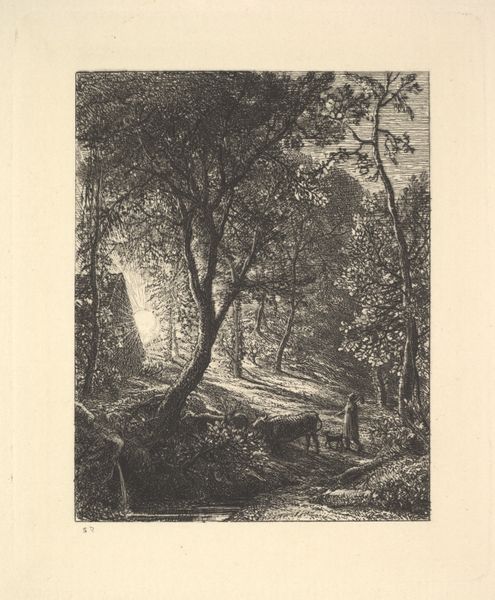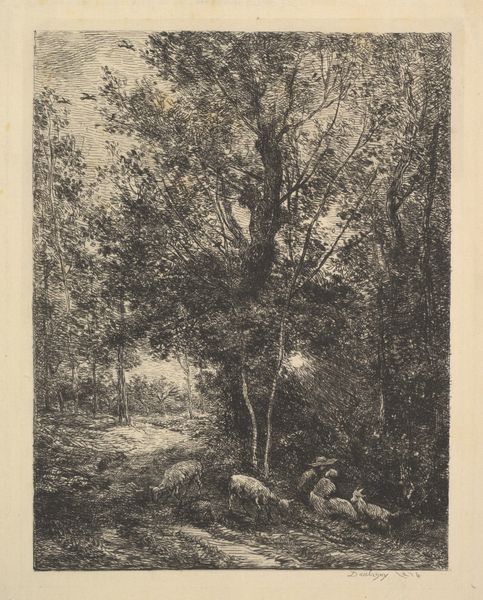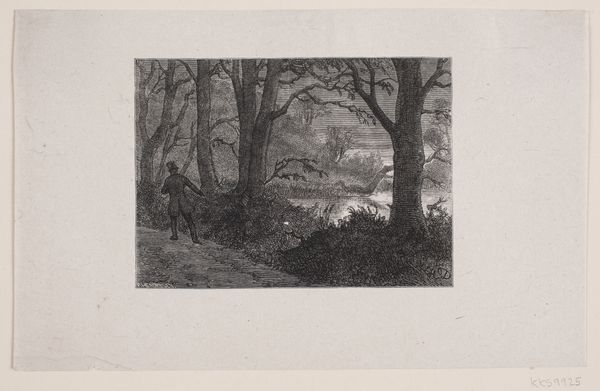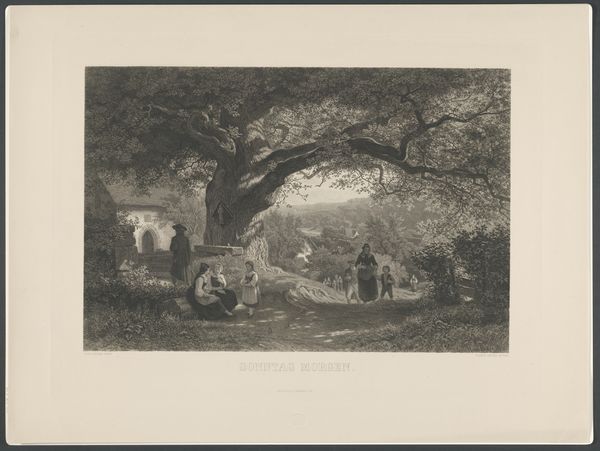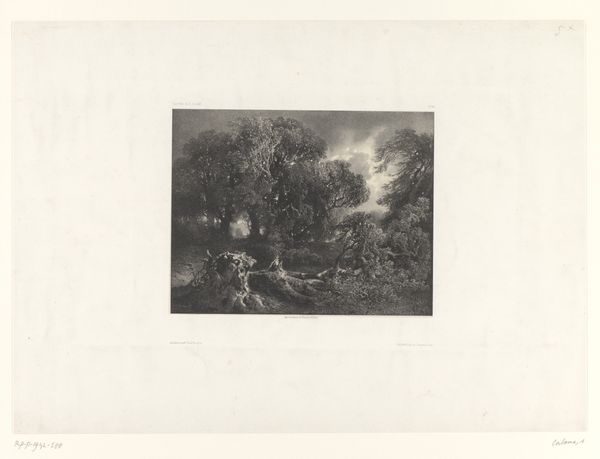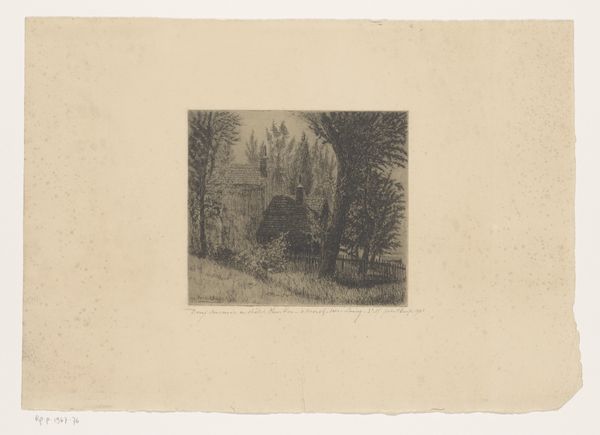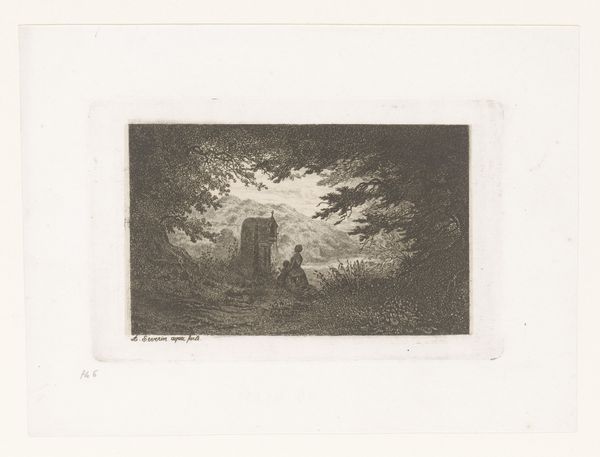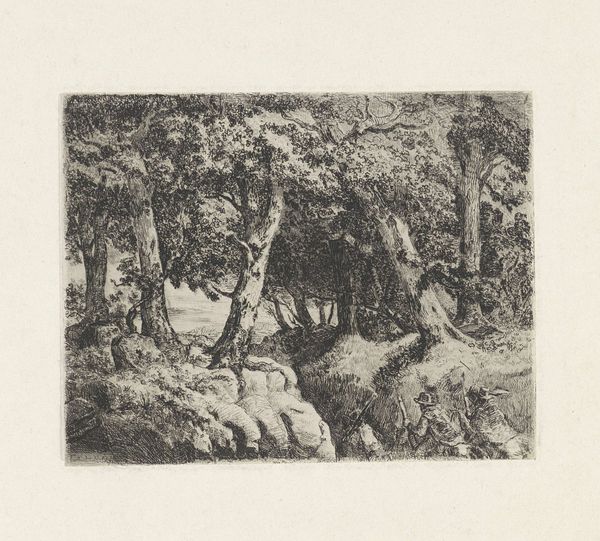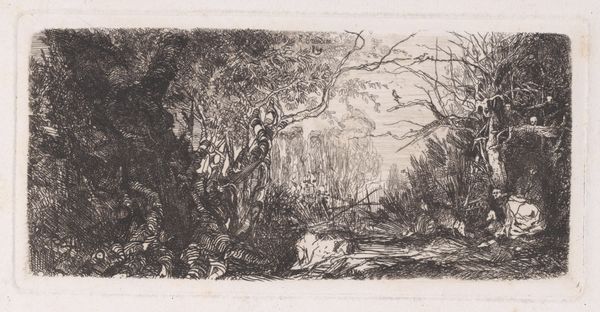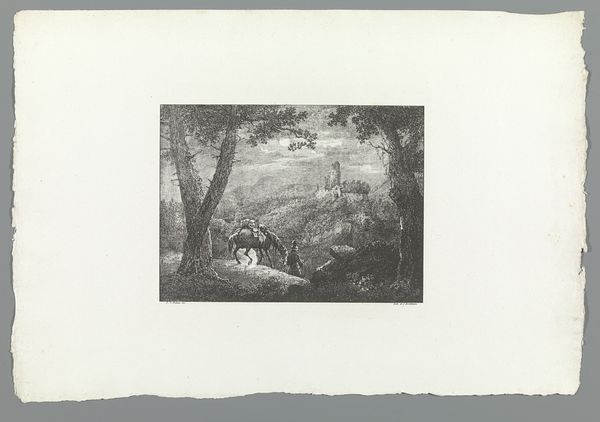
drawing, print, etching
#
drawing
# print
#
etching
#
landscape
#
figuration
#
romanticism
Dimensions: sheet: 12 1/16 x 8 3/4 in. (30.7 x 22.2 cm) plate: 4 7/8 x 4 5/8 in. (12.4 x 11.7 cm) image: 3 7/8 x 3 3/16 in. (9.8 x 8.1 cm)
Copyright: Public Domain
Curator: Let’s turn our attention to this evocative etching from 1850, currently residing at the Metropolitan Museum of Art: Samuel Palmer’s "Christmas, or Folding the Last Sheep". Editor: What a powerfully nostalgic scene! Even without knowing the title, you get a sense of homecoming, or a gentle completion. There's a lovely, dreamlike atmosphere created by the light. Curator: The image taps into that enduring desire to idealize rural life and English heritage, particularly popular during that era. It's part of the Romantic movement, idealizing nature. Palmer felt the rise of industry keenly. Editor: Indeed. Visually, that luminous moon certainly anchors that sensation, guiding not only the shepherd, but also our eye. Is that the 'Star of Bethlehem', a very deliberate symbolic choice? Curator: Likely so. Note how the 'enclosure', the literal folding of the sheep, could also allude to communal life, contrasting industrialization and a more agrarian vision. What does the gate to the left signal to you? Editor: Oh, the gate definitely leads to warmth and the human connections. Inside that small lit room is a group of seated people around a fire or table -- it's such a domestic scene that is framed as this very important invitation! The artist is placing great emphasis on human relationships. Curator: Interesting. Also the light! Palmer plays with light, yes. As an etching, light and shadow is central to what's visible, the bright moon versus deep blacks. Etching was often more affordable for everyday people to produce at that time than, say, a large painting. Editor: The figures leading sheep home evokes centuries of imagery, all the way to Classical antiquity – the Good Shepherd as a motif recurs again and again across history. The imagery speaks directly to ideas of comfort and guidance. Curator: And how were such themes being newly interpreted as England industrialized in 1850? I can also observe some fascinating continuities with images from hundreds of years prior. Editor: Absolutely, by considering a blend of pastoral iconography with the current transformations impacting British society we appreciate both this work's timeless nature as well as timely message. Thanks, this has been illuminating! Curator: Indeed. Thank you! The piece really makes you think about how the values and ideals represented in rural life play a role in society.
Comments
No comments
Be the first to comment and join the conversation on the ultimate creative platform.
